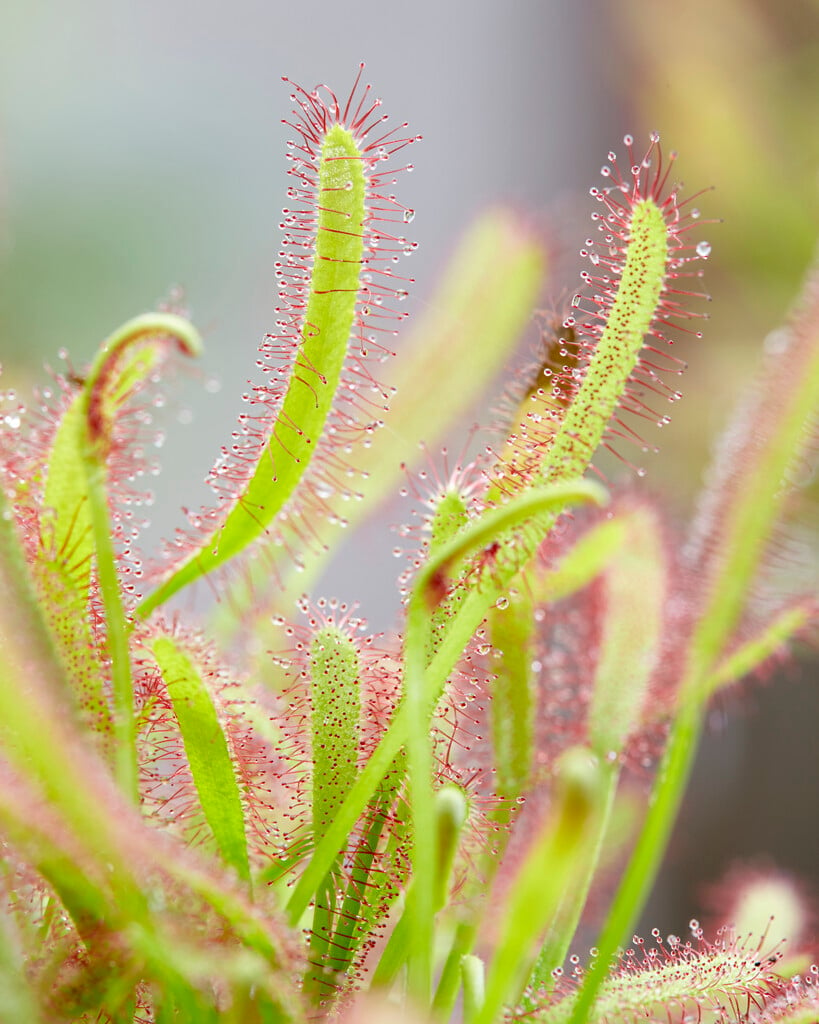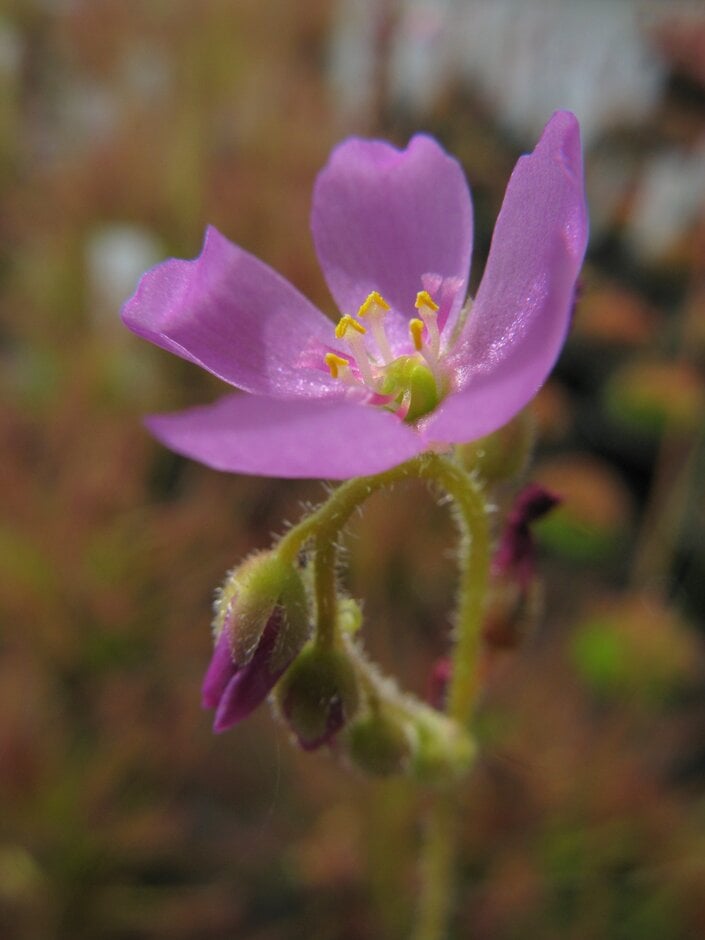Drosera capensis
Cape sundew
An evergreen carnivorous perennial, with rosettes of long, narrowly spoon-shaped leaves, covered in glandular red or pink hairs which are used to trap and digest insect prey. Clusters of pink flowers are produced from spring to autumn, and occasionally into winter
Size
Ultimate height
0.1–0.5 metresTime to ultimate height
1–2 yearsUltimate spread
0.1–0.5 metresGrowing conditions
Moisture
Poorly–drainedpH
Acid, NeutralColour & scent
| Stem | Flower | Foliage | Fruit | |
| Spring | Pink | Green Red | ||
|---|---|---|---|---|
| Summer | Pink | Green Red | ||
| Autumn | Pink | Green Red | ||
| Winter | Pink | Green Red |
Position
- Full sun
Aspect
South–facing
Exposure
Sheltered Hardiness
H3Botanical details
- Family
- Droseraceae
- Native to GB / Ireland
- No
- Foliage
- Evergreen
- Habit
- Clump forming
- Genus
Drosera, commonly known as the sundews are one of the largest genera of carnivorous plants. They are perennial or (more rarely) annual, upright herbaceous plants forming either prostrate or upright rosettes, and can live for up to 50 years.
- Name status
Correct
How to grow
Cultivation
In frost-prone areas, grow under glass, in full light but with shade from hot sun, and keep continually moist by standing in a saucer of rainwater. In warmer climates, grow in full sun in wet, acidic conditions such as a bog garden.
Propagation
Propagate by seed, softwood cuttings, or by root cuttings when dormant
Suggested planting locations and garden types
- Houseplants
- Conservatory and greenhouse
Pruning
No pruning required
Pests
Generally pest-free
Diseases
Generally disease-free
Get involved
The Royal Horticultural Society is the UK’s leading gardening charity. We aim to enrich everyone’s life through plants, and make the UK a greener and more beautiful place.

